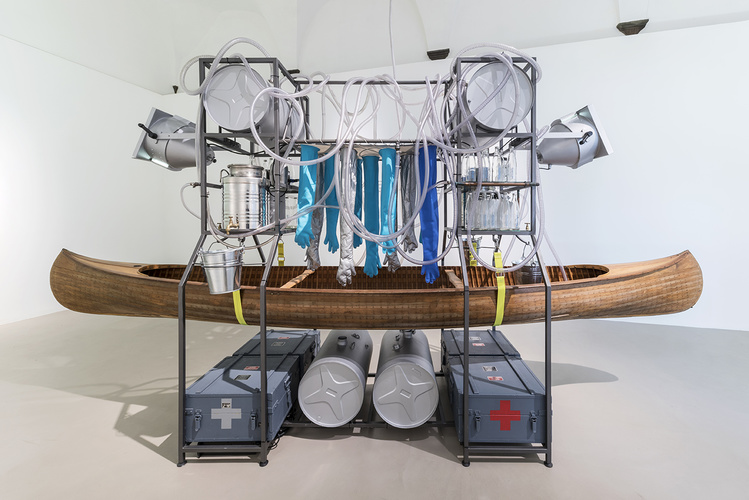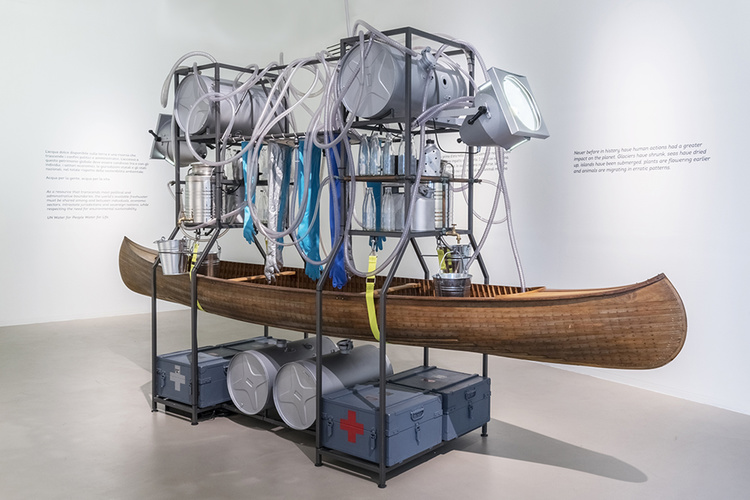OrtaWater - Fluvial Intervention Unit
Date:
2005
Ref:
1313
Matériaux:
Canadian maple wood canoe, steel structure, water pipe network, 4 glass shelves, 2 light projectors, 4 buckets, 4 crates, 4 water drums, 2 water tanks, 2 churns, copper pipes and taps, 24 OrtaWater bottles, 2 water gourds, textile gloves, webbing, audio MP3 (optional)
Dimensions:
510 x 120 x 260cm
Catalogued:
Lucy + Jorge Orta: Food Water Life, Princeton Architectural Press, NY, pp.94-95; Lucy + Jorge Orta Antarctica, p15 & 47, Electa Italy; Lucy + Jorge Pattern Book, pp88-89, Black Dog Publishing, UK
Exhibition history:
2019 Museo Novencento, Florence, Italy; 2016 Les Abbatoirs Toulouse, France; 2012-2016 Tufts University Gallery US tour); 2008 Green Leaf prize for sculpture with an environmental message United Nations Art for
Courtesy:
Lucy + Jorge Orta
Originally co-commissioned by Fondazione Bevilacqua La Masa for the 51st Venice Biennale and the Museum Boijmans Van Beuningen Rotterdam (2005-2006) the body of work OrtaWater focuses on the general scarcity of water and issues surrounding the privatization and corporate control effecting access to clean water. Starting from a rigorous analysis of this crucial resource through visual and textual research and collaborative workshops with engineers, Lucy + Jorge Orta sketch poetic artefacts, sculptures, large-scale installations and public artworks that evoke the cycle of gathering, purifying and distributing water.
One angle of their research visualises low-cost water purification devices enabling filthy water to be pumped and filtered directly from local sources. Waters that have been purified and distrubuted include the Venice's Canal Grande, the Emmersingel in Rotterdam (2005) the Hang Pu River in Shanghai (2012), and the Canal de l'Orcq in Paris (2014). In Venice, water from the Grand Canal was pumped into the St Marks Square gallery where it was channeled through a network of pipes suspended from the sculptures, arriving into a filtration and purification device, where the resulting clean water was bottled in a glass bottle edition and distributed to the biennale visitors.

